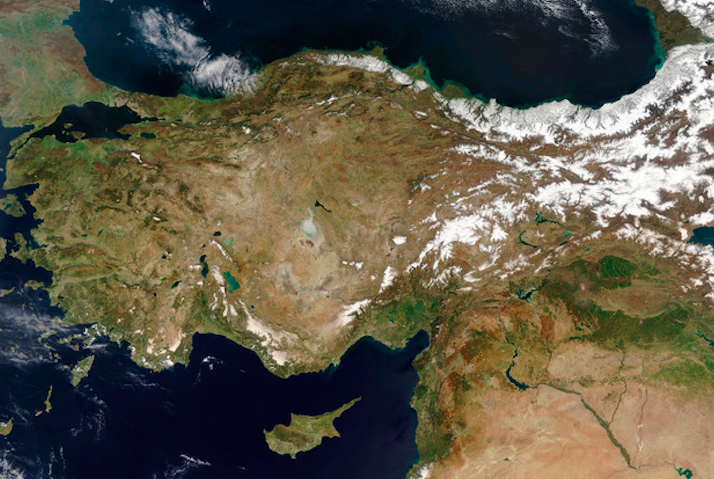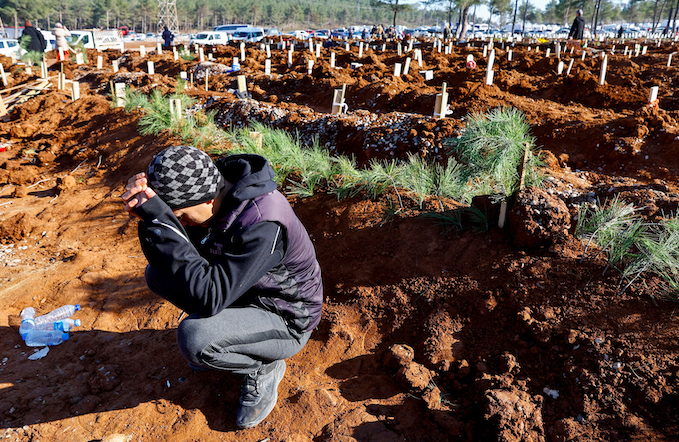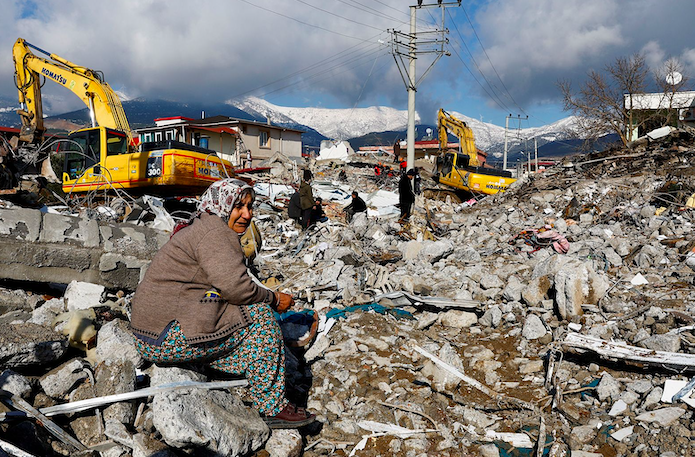A deadly earthquake struck Turkey and Syria this week leveling thousands of buildings, injuring tens of thousands, and killing 35,000+ people. With a magnitude of 7.8 on the Moment Magnitude Scale, the February 6, 2023 earthquake is the strongest and deadliest ever recorded in the Levant.
Earthquakes occur naturally when large tectonic plates underneath the Earth's crust or lithosphere move spontaneously. There are eight major plates, and many smaller platelets, which have been in a slow creeping motion for about 3.4 billion years. Much like people, when and where they meet results in a convergent, divergent, or transformational experience. Volcanos, oceanic trenches, mountains and earthquakes all occur at these intersections. The relative movement of the earth’s tectonic plates typically ranges from zero to 10 cm, annually.
Then, of course, came man.
Induced Seismicity
The U.S. National Research Council examined how energy technologies—including conventional oil and gas, natural gas, geothermal energy, and nuclear energy—may cause earthquakes. The report found that only a very small fraction of extraction activities among thousands of energy development sites in the United States had actually induced seismicity at levels noticeable to the public.
However, the council adds, “the underground injection of wastewater and high pressure fluids produced in consequence of hydraulic fracturing and other energy technologies can and has produced earthquakes.”
The United States Geological Survey (USGS) concluded that a 5.7 earthquake in Oklahoma in 1952 was induced by deep injection of wastewater by the oil industry. A 6.6 occurs in Maharashtra, India in 1967 at the newly developed Konya Dam. Even underground nuclear tests on Amchitka Island in 1971 caused a 7.1 in Alaska.
Geothermal power plants like The Geysers shook San Francisco at 4.6 in ‘73. Another 5.8 occurs at Oklahoma’s injection wells in 2011. Finally, North Korea’s unprecedented underground nuclear tests have been rollicking the region for nearly 20 years, accounting for 6 major earthquakes ranging from 4.3 to 6.3 respectively.
Fracking in Turkey
A relative newcomer to hydraulic fracking, Turkey entered a new energy era by introducing fracking for oil and natural gas in 2019. President Tayyip Erdoğan announced that Turkey had begun fracking in the southeastern province of Diyarbakır, the very epicenter of this week’s quake.
Sunday Morning / February 12, 2023

Turkey and the Levant via satellite.
Turkey sits at the intersection of two civilizations and three tectonic plates: the Anatolian, Arabian and African. While Arabia moves northwards into Europe, Anatolian is moving west. Likely to have occurred at one of its two intersections (East Anatolian Fault, Dead Sea Transform Fault), Strike-Slip Faults absorb some motion as they move past each other, according to the United States Geological Survey. “While this area has many earthquakes every year caused by the ongoing motion of the tectonic plates this earthquake was unusually violent.” Shaking was felt in Istanbul, Baghdad, and Cairo.
The Nuclear Ambition
Russia's President Vladimir Putin was among the first to send military support to both countries hit by the earthquake. The Kremlin's official statement, "The Turkish president warmly thanks Vladimir Putin for such a prompt and sincere reaction."
Russia’s first stop, as it happens, was The Akkuyu Nuclear Power Plant in southern Turkey. ROSATOM, a Russian state-owned nuclear energy company, began construction in 2015 and the plant is scheduled to be completed next month, coincidentally in the same region as this week’s quake.
It’s the first “Build-Own-Operate” nuclear power plant in the world. In the BOO scheme, Russia is building, operates and owns nuclear power reactors in foreign countries like Turkey, Egypt and Hungary.
In all, Russia has operating nuclear reactors in 11 countries, and more are under construction or being planned. Russia has also signed memorandums of understanding and intergovernmental agreements with at least 30 countries around the world, mostly in Africa.
Revolution of Dignity
The Revolution of Dignity, which launched the Russo-Ukrainian War in 2014, was triggered by President Viktor Yanukovych's decision not to sign the European Union Ukraine Association Agreement, a pact between the European Atomic Energy Community, Ukraine, and the EU's 28 member states.

Mass cemetery in Kahramanmaras, Turkey February 9, 2023.
As President Volodymyr Zelenskyy makes a whistle stop tour through Europe this week, the largest donor of financial aid to Ukraine, it’s worth remembering that this war began with a discussion about energy. Zelenskyy explained to 27 heads of state in Brussels on Thursday that Kyiv is fighting for European values.
We, my friends, are protecting Europe from a regime that has proven that it has only one ambition: to destroy Europe’s freedom and to be an authoritarian master on the continent.
Energy was the decisive and winning factor in World War II, and is a preeminent consideration for each nation in relation to the global community. While world leaders collectively tinker with democracy, Mother Earth in her nonpartisan modéle will continue to shake the trees.








